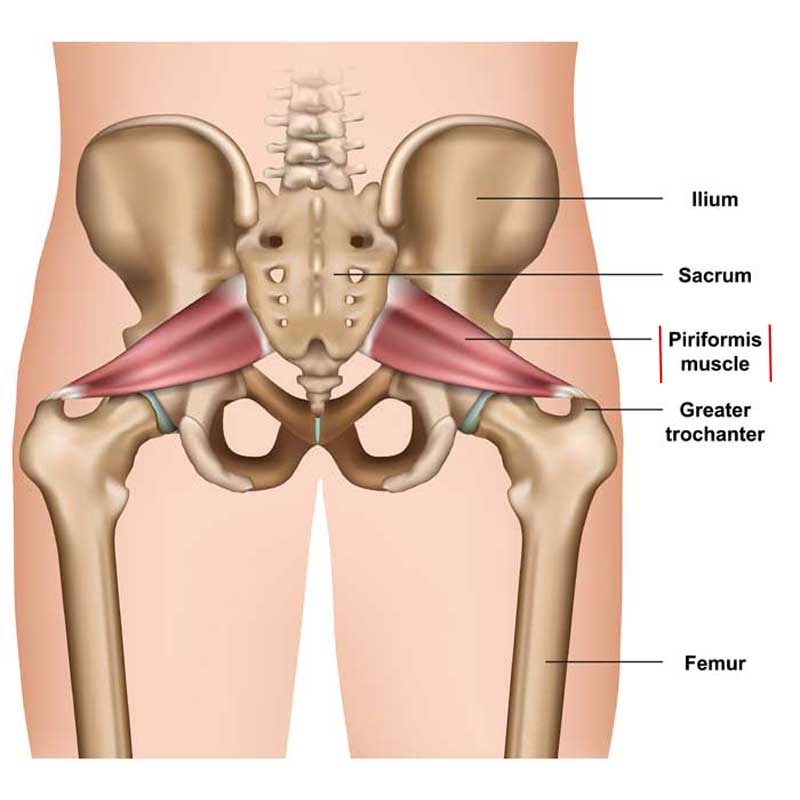
Piriformis Muscle
Origin: Attaches to the pelvic surface of the sacrum between the anterior sacral foramina, the margin of the greater sciatic foramen, and the sacrotuberous ligament
Insertion: Attaches to the superior margin of the greater trochanter of the femur
Actions: Assists with external rotation and abduction of the thigh
Innervation: Nerve to piriformis (S1, S2)
Blood Supply: Inferior gluteal artery from the internal iliac artery
Primary Actions of the Piriformis Muscle
The piriformis does not perform a primary action, it assists other muscles with movement of the thigh and hip stabilization.
Advertisement
Secondary Actions of the Piriformis
1. Assists with external rotation of the thigh at the hip
Agonists:
- Obturator internus
- Obturator externus
- Gemellus superior
- Gemellus inferior
- Quadratus femoris
Antagonists:
- Tensor Fasciae Latae
- Gluteus Minimus (anterior fibers)
- Gluteus Medius (anterior fibers)
Gluteus maximus and sartorius also assist with external rotation of thigh at the hip when the hip is extended.
2. Assists with the abduction of the thigh at the hip when the hip is flexed
Agonists:
- Gluteus Maximus (upper fibers)
- Gluteus Medius
- Gluteus Minimus
Antagonists:
- Adductor Longus
- Adductor Brevis,
- Adductor Magnus
Muscle Pain Information: The piriformis muscle contributes to pain in the buttock, and back of the thigh.

 An excellent book for those beginning the study of anatomy. Coloring helps memory retention.
An excellent book for those beginning the study of anatomy. Coloring helps memory retention. For intermediary anatomy students learning skeletal and muscle structure.
For intermediary anatomy students learning skeletal and muscle structure. For beginning and intermediary anatomy . Muscle overlays on the human body. Excellent visuals!
For beginning and intermediary anatomy . Muscle overlays on the human body. Excellent visuals!